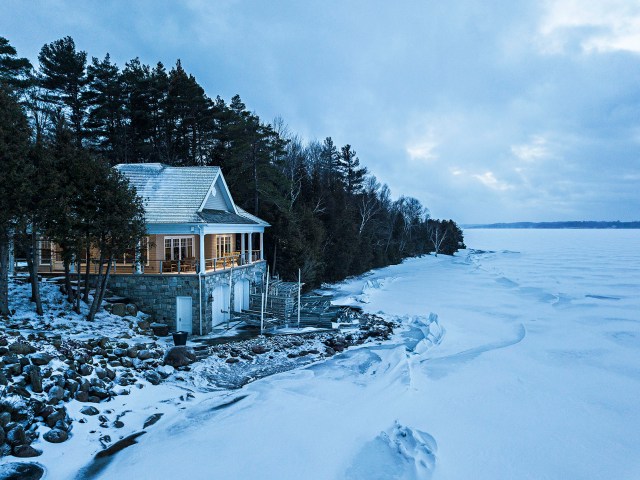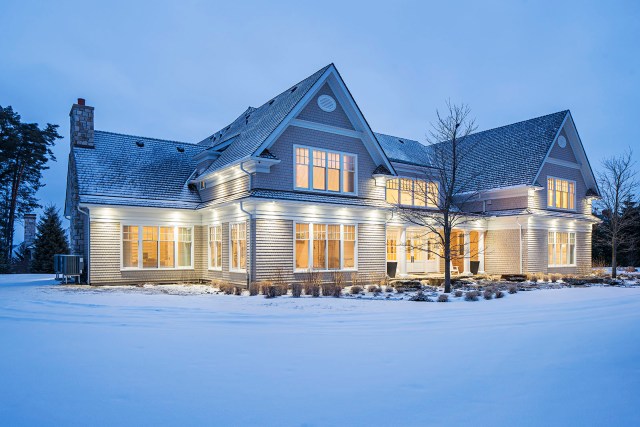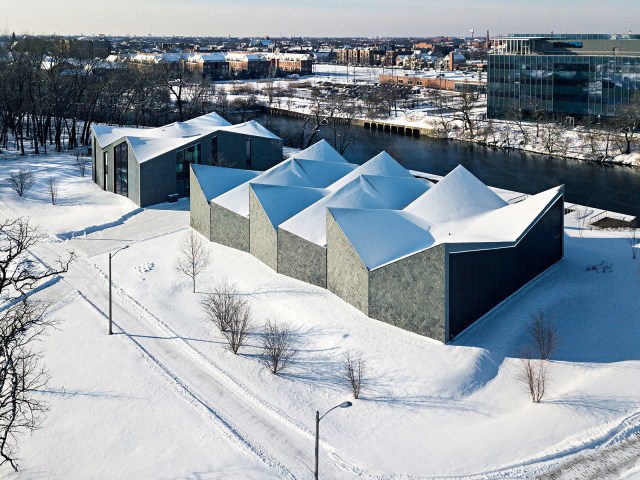As a commercial architectural photographer, most of my clients want images shot in great weather conditions: Blue skies, maybe a few clouds, green grass, leaves on the trees, etc. Living in Toronto, it means I can photograph exteriors from approximately June to October (or May to November on a good year).
Does it mean I never shoot in winter? Not at all! There are some shooting opportunities in winter, like interiors and shooting with snow.
Snowy conditions and low winter light can be great for architectural photography. With the right building, it can make it shine and showcase it in a completely different light.

What buildings look good with snow?
I like to shoot single-family homes with a decent yard. Including snow has a natural feel to it, so any house close to nature works great. A cottage in a remote location is perfect.
If you’re in the city, you need a decent amount of grass around the building, as streets and sidewalks tend to be plowed pretty quickly. Parks are great for snow.
Dark buildings really show up well when shot in the snow. The contrast is striking, and with some sunlight, it will look great.

What are the pros of photographing in winter?
Winter is great for the nice, warm low light. It can be a downside too, as shadows are longer and the north side of buildings (if you’re in the northern hemisphere) doesn’t get any sun.
My clients usually don’t like bare trees, but if the building you are shooting is surrounded by trees, having bare trees allows you to see through and see more of the architecture.
Snow is great to create minimalist compositions, with everything being white except for a few things, including the building you’re shooting.

Tips for shooting in the snow
Planning is important. Ideally, you want to shoot right after a snowfall, to have the least amount of tracks in the snow. If you can get some pretty blue skies, it’s a bonus, but grey skies and fog can work well too.
Your camera’s meter will likely get tricked and underexpose. Make sure the snow looks white and not gray.
Shooting a blue hour looks great with the warm light spilling out on the cold snow.
And finally, be prepared for the cold: Wear many layers, good shoes, gloves and a hat. After shooting, make sure you don’t put your camera in a warm place or it will fog up. Put it back in your bag or use a Ziploc bag.
Tell your story with the second annual Visual Storytelling Conference!
Experience four days of interactive, online training sessions featuring a range of educational content with experienced photographers and content creators. This free event kicks off with a series of technical boot camps to build essential skills, followed by live, online sessions on photography, video, business and social media. Join live from March 10-13, 2022!
